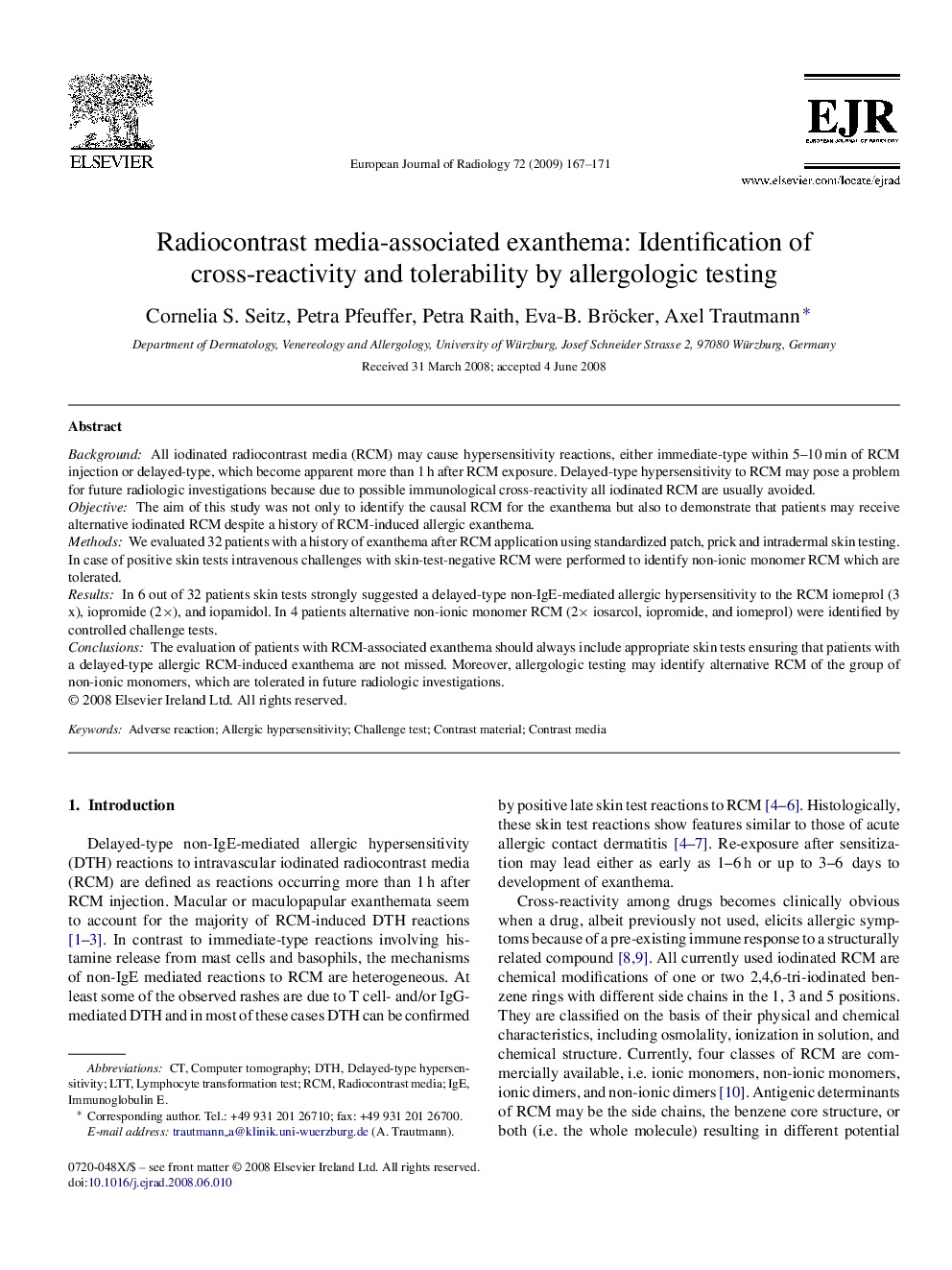| Article ID | Journal | Published Year | Pages | File Type |
|---|---|---|---|---|
| 4227053 | European Journal of Radiology | 2009 | 5 Pages |
BackgroundAll iodinated radiocontrast media (RCM) may cause hypersensitivity reactions, either immediate-type within 5–10 min of RCM injection or delayed-type, which become apparent more than 1 h after RCM exposure. Delayed-type hypersensitivity to RCM may pose a problem for future radiologic investigations because due to possible immunological cross-reactivity all iodinated RCM are usually avoided.ObjectiveThe aim of this study was not only to identify the causal RCM for the exanthema but also to demonstrate that patients may receive alternative iodinated RCM despite a history of RCM-induced allergic exanthema.MethodsWe evaluated 32 patients with a history of exanthema after RCM application using standardized patch, prick and intradermal skin testing. In case of positive skin tests intravenous challenges with skin-test-negative RCM were performed to identify non-ionic monomer RCM which are tolerated.ResultsIn 6 out of 32 patients skin tests strongly suggested a delayed-type non-IgE-mediated allergic hypersensitivity to the RCM iomeprol (3 x), iopromide (2×), and iopamidol. In 4 patients alternative non-ionic monomer RCM (2× iosarcol, iopromide, and iomeprol) were identified by controlled challenge tests.ConclusionsThe evaluation of patients with RCM-associated exanthema should always include appropriate skin tests ensuring that patients with a delayed-type allergic RCM-induced exanthema are not missed. Moreover, allergologic testing may identify alternative RCM of the group of non-ionic monomers, which are tolerated in future radiologic investigations.
